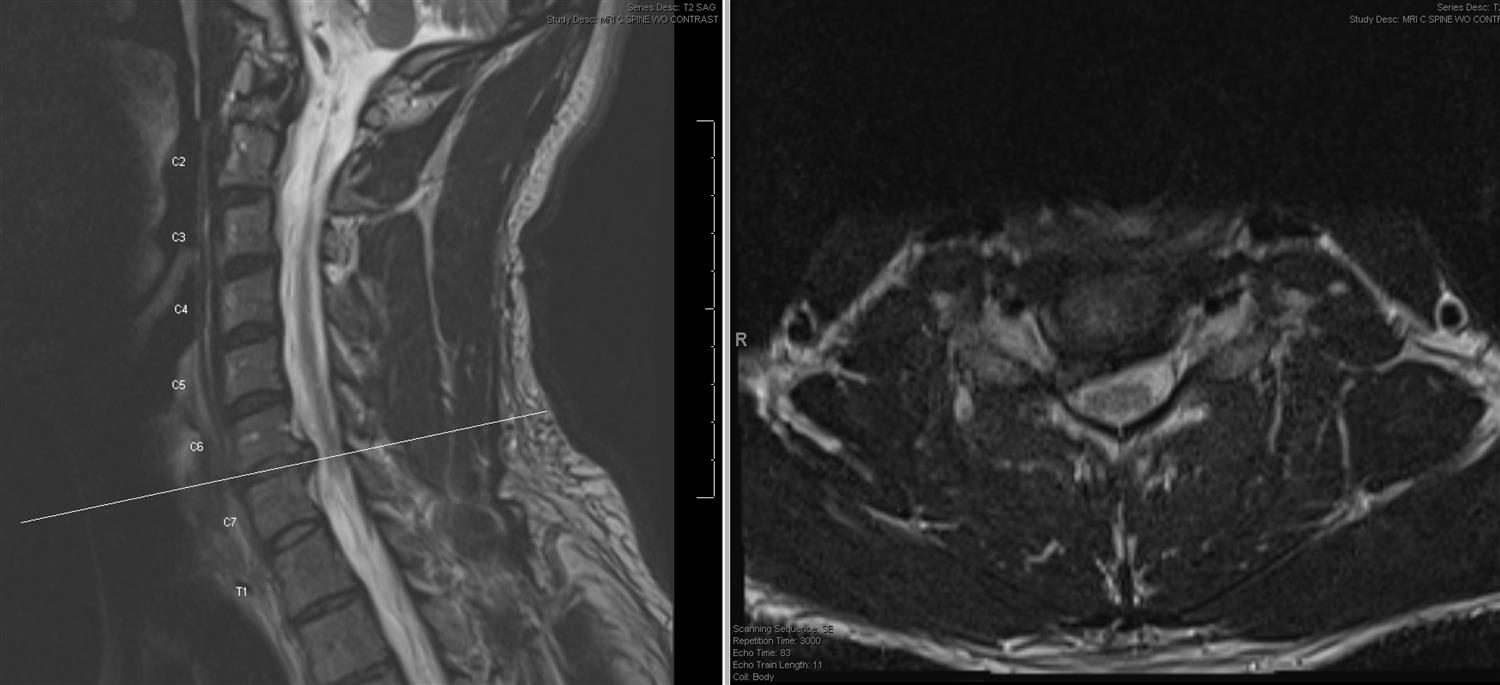Eshealthtips.com – What Causes Cervical Spine Nerve Pain? Many different conditions can cause pain in the cervical spine, including radiculopathy. The diagnosis of radiculopathy is usually made based on the patient’s history and physical examination. MRI of the cervical spine is often necessary to confirm the diagnosis. If the pain persists, treatment options vary. In many cases, an early diagnosis of Cervical Spine Nerve Pain will help patients avoid surgical procedures and other treatments.
Diagnosing with CT Scan or Spinal MRI
The cervical spine is comprised of seven vertebrae, separated by a gel-like disc. The spinal cord runs through the disc and travels to the brain. Nerve roots branch off the spinal cord and go to specific areas in the arms and hands. These nerves send messages from the brain to the muscles, which allow you to move, grasp, and feel your hand. When pressure is applied to one of these nerves, the whole branch can become affected.
Imaging tests are essential for diagnosing cervical radiculopathy. A conventional X-ray may show bony vertebrae or bone spur formation in the area of a nerve foramen. A CT scan or MRI of the spine can also reveal the spinal discs and nerves. However, a CT scan is more comprehensive than an x-ray. A CT scan is also helpful in identifying bone spurs in the area of the foramen.

Fortunately, there are treatments for cervical radiculopathy. Medications and physical therapy may help alleviate pain. Surgical procedures are available for severe cases. There are also several surgical options for Cervical Spine Nerve Pain. So, what Are the Common Causes of Cervical Spine Nerve Pain? Here are a Few Things You Need to Know
Treatment Options for Spinal Nerve Pain
The most common cause of Cervical Spine Nerve Pain is degeneration of the spine. The vertebrae lose height and disk space decreases as a result. This results in compression of the spinal cord and nerves, which can cause pain and stiffness. The symptoms of cervical radiculopathy vary widely from one person to the next. Treatment options for Cervical Spine Nerve Pain include physical therapy, chiropractic care, and physical medicine.
Vertebrae are the stacks of bones in the spine. Cervical Spine is made up of seven small vertebrae. The cervical spine contains the spinal cord, which travels through the canal. Nerve roots branch out from the spinal cord. The bones that make up the cervical spine form the spinal canal. These bones also protect the spinal cord. The spinal cord runs through the canal, and the nerves exit through the foramen between the vertebrae.

Patients with Cervical Spine Nerve Pain may benefit from epidural steroid injections. The procedure is often done on an outpatient basis, and the physician may use fluoroscopy to help direct the needle to the nerve in question. The pain relief provided by epidural steroid injections is temporary, and may postpone surgical treatment. So, how Do I Find a Doctor Who Can Help With Cervical Spine Nerve Pain?
The Goal of Treatment is to Prevent Further Damage
A doctor may prescribe a numbing medicine or anti-inflammatory drugs such as ibuprofen. Physical therapy may also help reduce the pain and increase movement. Sometimes, neck surgery may be needed to correct the underlying problem. This depends on the severity of the condition and the extent of the nerve compression. Once the symptoms are under control, physical therapy can help the patient overcome their condition. Ultimately, the goal of treatment is to prevent further damage to the neural structures in the neck.
If the symptoms persist, nonsteroidal anti-inflammatory drugs (NSAIDs) may be an effective treatment. Nonsteroidal anti-inflammatory drugs (NSAIDs) target the inflammation caused by the pinched nerve. These medications may also reduce swelling in the area surrounding the nerve. However, these options must be prescribed by a qualified medical practitioner. There are also many surgical options to treat Cervical Spine Nerve Pain.

The doctor may perform an MRI to determine the cause of the pain. MRI scans are very helpful in identifying the exact location and type of nerve damage. Nerve compression can be caused by a herniated or bulging disc or other soft tissue damage. They can also show if a spinal cord or nerve roots have been damaged. If the pain is accompanied by weakness, an MRI may help determine the cause of the problem.
Reference: